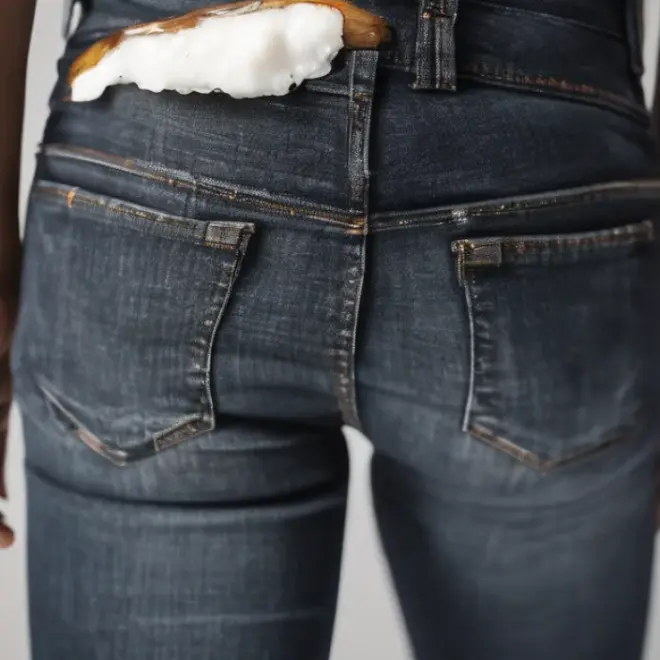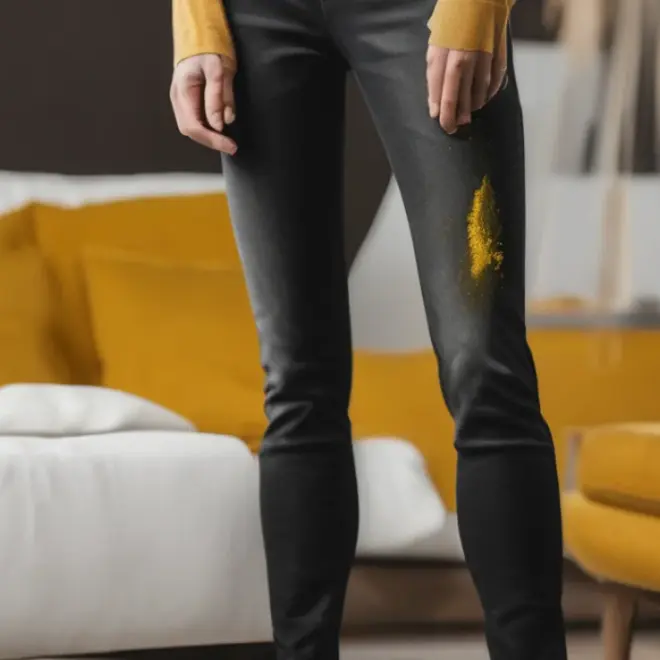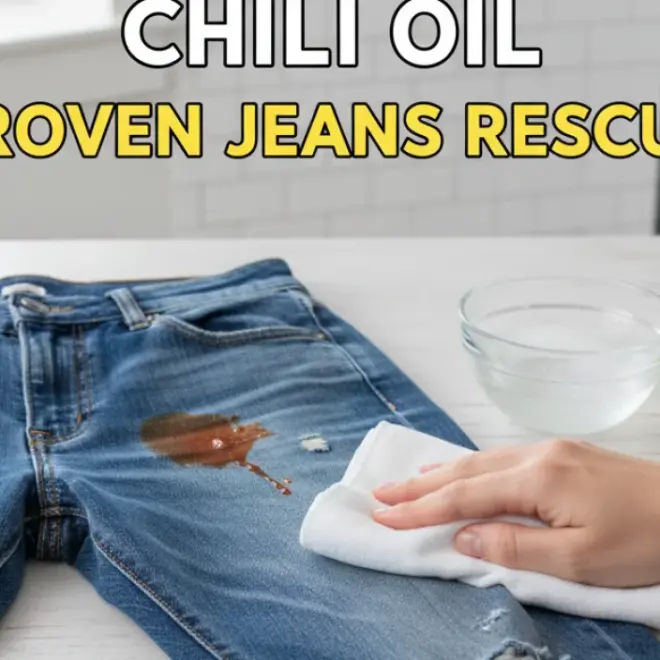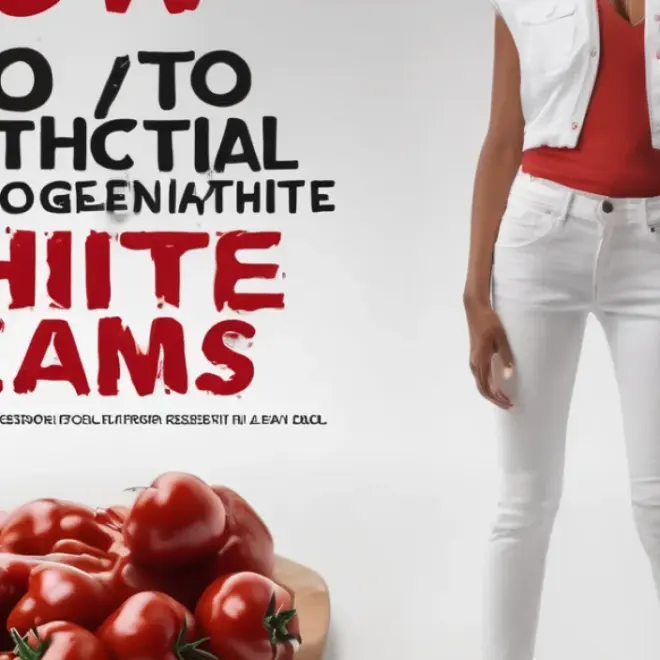For stubborn white wine stains on your favorite jeans, act fast! Blotting immediately and using a simple mixture of dish soap and hydrogen peroxide is often the quickest, most effective way to lift the stain before it sets permanently.
Spilling something on your jeans, especially a light-colored liquid like white wine, can feel like a mini-disaster. That pale splash can quickly turn into a stubborn mark that seems impossible to remove. But don’t worry, getting your denim back to its pristine condition is usually much simpler than you think. With a few common household items and a little bit of know-how, you can tackle that white wine stain effectively and effortlessly. We’ll walk you through a proven method that works on most denim fabrics, restoring your jeans to their former glory. Let’s get those jeans looking great again!
Understanding White Wine Stains on Denim
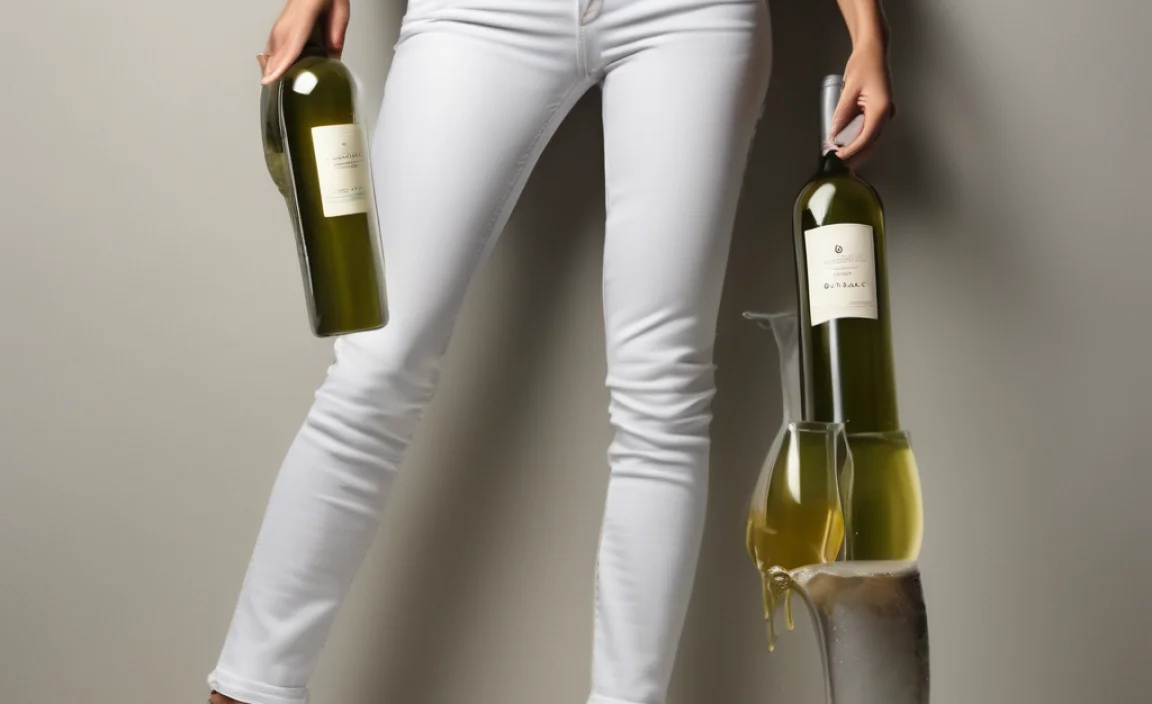
White wine, while delicious, can be a tricky stain. Unlike red wine, it doesn’t contain the same deeply pigmented tannins, which might lead some to think it’s less of a concern. However, white wine often contains sugars and acids that can bind to fabric fibers. If left untreated, these components can cause discoloration or a sticky residue that attracts dirt. The key to removing any wine stain, white or red, is prompt action. The longer a stain sits, the more it penetrates the fabric and the harder it becomes to lift.
Why Denim Can Be Tricky
Denim is a sturdy cotton twill fabric, but its weave can sometimes trap liquids and stains. The dye in denim can also be susceptible to certain cleaning agents, so it’s crucial to use gentle yet effective methods. Understanding how your jeans are made and the nature of the stain will help you choose the best approach to avoid damaging the fabric or setting the stain further.
The Proven Effortless Method: Step-by-Step
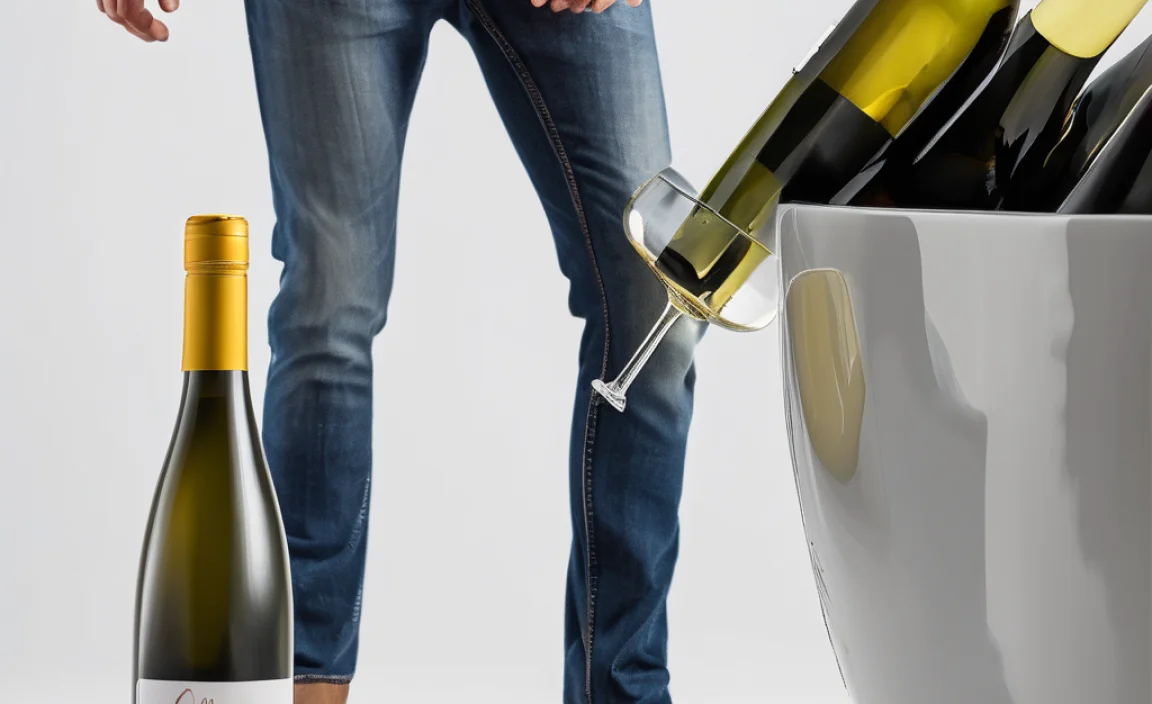
This method focuses on immediate action and uses readily available household items. It’s designed to be gentle on your denim while being tough on the stain.
What You’ll Need:
Before you start, gather these items. Having them ready will ensure you can act quickly when a spill happens.
Clean, absorbent cloths or paper towels: For blotting the stain.
Cold water: To rinse and dilute.
Mild liquid dish soap: A gentle degreaser that helps lift stains.
Hydrogen peroxide (3% solution): A mild bleaching agent that can lift color without usually damaging denim. You can find this at most drugstores and supermarkets.
White vinegar (optional): Can help neutralize odors and act as a mild fabric brightener.
A soft-bristled brush or old toothbrush: For gently working the cleaning solution into the fabric.
A clean towel: For drying.
Step 1: Blot, Don’t Rub!
The very first thing to do when you notice a white wine spill is to grab a clean cloth or paper towel. Gently blot at the stain from the outside edges inward. The goal here is to absorb as much of the liquid as possible without spreading it. Rubbing can push the wine deeper into the fabric fibers, making it much harder to remove later.
Step 2: Rinse with Cold Water
Once you’ve blotted up the excess wine, turn the jeans inside out. Hold the stained area under a stream of cold running water. This helps to flush out the remaining wine from the back of the fabric. Continue rinsing until you can no longer see any significant traces of the liquid. Hot water can actually set protein-based stains and, in some cases, may make certain types of discoloration more permanent, so always opt for cold.
Step 3: Prepare the Stain Solution
Now, it’s time to create a gentle cleaning solution. In a small bowl, mix:
1 part mild liquid dish soap
2 parts 3% hydrogen peroxide
For tougher stains or if you want to add an extra boost, you can also add a splash of white vinegar to this mixture.
Understanding the Ingredients:
Dish Soap: Its surfactants break down oils and residues, making it effective for lifting many types of stains.
Hydrogen Peroxide: This is a mild oxygen-based bleach. It works by releasing oxygen molecules that break down chromophores (the parts of a molecule responsible for color), effectively lightening or removing the stain. Because it’s a hydrogen-based solution, it’s generally safer for colored fabrics than chlorine bleach, and it breaks down into water and oxygen. According to the Harvard Medical School, its antimicrobial properties are well-known, but it also has mild bleaching capabilities.
White Vinegar: A mild acid that can help cut through residue and neutralize odors.
Step 4: Apply and Gently Work In
Dampen the stained area slightly with cold water. Then, apply your dish soap and hydrogen peroxide mixture directly onto the stain. Use your fingers or a soft-bristled brush (like an old toothbrush) to gently work the solution into the fabric. Remember, gentleness is key. You’re trying to lift the stain, not damage the weave of your jeans. Work the solution from the outside of the stain towards the center to prevent spreading. Let the solution sit on the stain for about 5-10 minutes.
Step 5: Rinse and Check
After letting the solution work, rinse the treated area thoroughly with cold water. Check the stain. If it’s still visible, repeat Steps 3 and 4. You might need to apply the solution a second or even a third time for stubborn stains. Don’t be discouraged if it doesn’t vanish immediately; persistence is often rewarded.
Step 6: Launder As Usual
Once you’re satisfied that the stain is gone or significantly lightened, you can wash your jeans as you normally would. It’s best to wash them in cold water on a gentle cycle. Do NOT use hot water for this wash.
Step 7: Air Dry
Crucially, do NOT put your jeans in the dryer until you are absolutely sure the stain is gone. The heat from the dryer can permanently set any remaining discoloration. Instead, air dry your jeans. Hang them up or lay them flat. Once they are completely dry, inspect the area again under good light. If any trace of the stain remains, you can repeat the cleaning process. If it’s completely out, then you can safely put them in the dryer if you wish, or simply wear them.
Alternative Methods and Tips
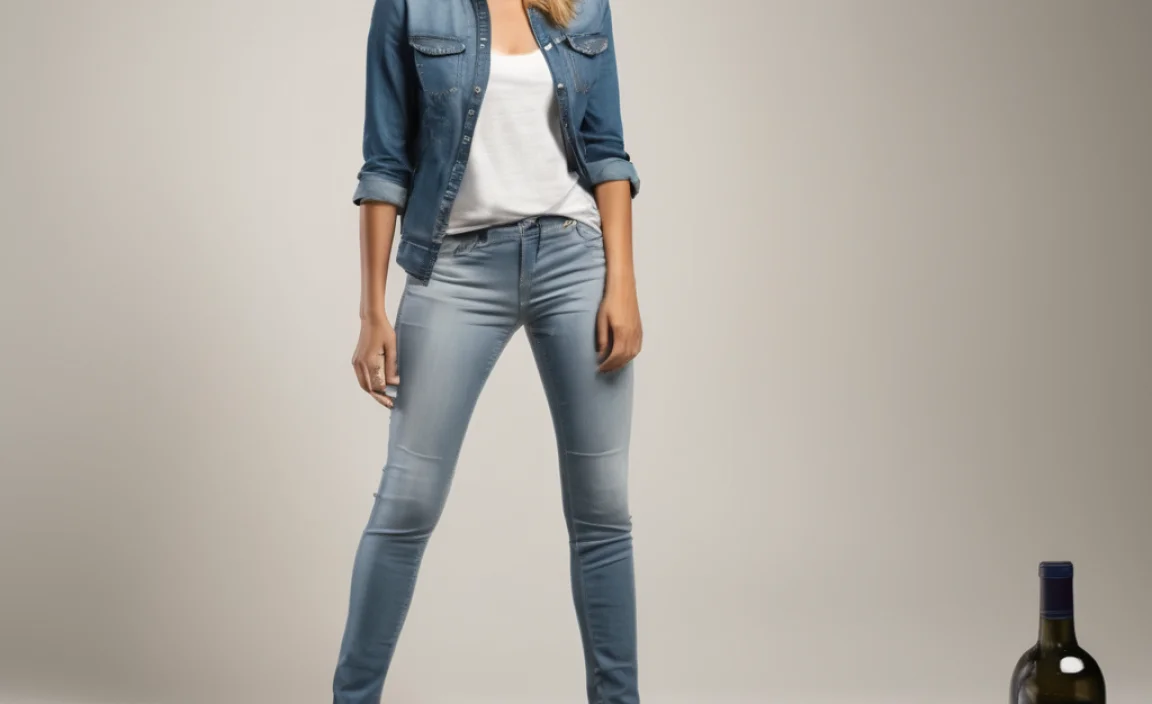
While the dish soap and hydrogen peroxide combination is highly effective, there are a few other approaches and helpful tips to keep in mind, especially for different situations or sensitivities.
Club Soda
Club soda can be a surprisingly effective stain remover for fresh spills. The carbonation can help lift foreign substances from fabric fibers.
How to Use Club Soda:
1. Blot: As always, blot up excess liquid first.
2. Pour: Generously pour club soda directly onto the stain.
3. Blot Again: Gently blot the area with a clean cloth.
4. Rinse: Rinse with cold water and proceed with washing.
Club soda is mild and doesn’t typically require spot testing, making it a good first-line defense for fresh spills.
Salt Paste
A paste made from salt and water can also be used to draw out moisture and color from a fresh stain.
How to Use Salt Paste:
1. Blot: Remove excess wine.
2. Apply Salt: Cover the wet stain generously with table salt. The salt will absorb the liquid.
3. Let Sit: Allow the salt to sit for at least 30-60 minutes, or until it has absorbed moisture.
4. Brush Off & Rinse: Gently brush off the salt and rinse the area with cold water.
5. Follow Up: If a stain remains, proceed with the dish soap and hydrogen peroxide method.
Commercial Stain Removers
There are many commercial stain removers available. Look for one specifically designed for wine or colored liquid stains. Always follow the product’s instructions carefully and test it on an inconspicuous area of your jeans first to ensure it doesn’t affect the color or fabric. For example, OxiClean is a popular oxygen-based cleaner that can be effective for many types of stains.
Spot Testing: A Crucial Precaution
Before applying any cleaning solution to a visible part of your jeans, always perform a spot test. Find an inconspicuous area like an inside seam, the hem, or the waistband facing inside. Apply a small amount of the cleaning solution and let it sit for a few minutes. Rinse and let it dry. Check for any color changes or fabric damage. This simple step can save your favorite pair of jeans from potential damage.
Dealing with Older, Set-In Stains
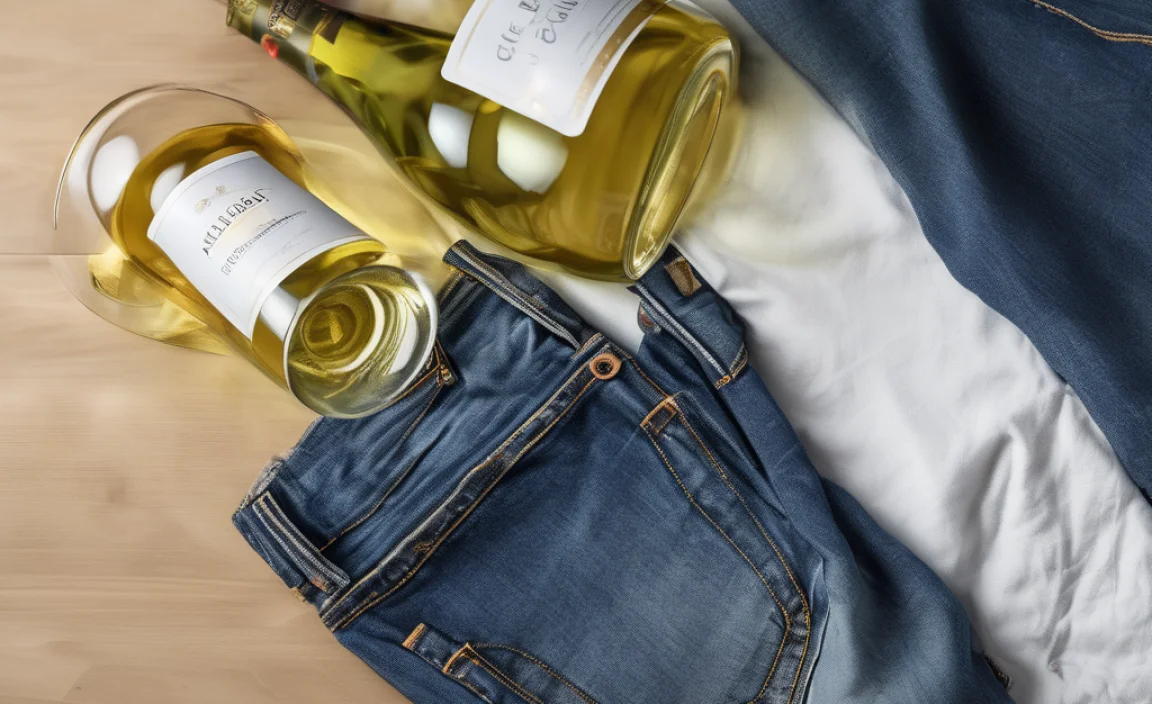
Older stains can be more challenging, but not impossible to remove. The key is patience and potentially more intensive treatment.
1. Pre-Soaking: For set-in stains, soak the affected area in cold water mixed with a bit of the dish soap and hydrogen peroxide solution for several hours, or even overnight.
2. Gentle Agitation: After soaking, gently rub the fibers together in the stained area or use the soft brush again.
3. Oxygen Bleach: Consider a more potent oxygen-based cleaner. Products like OxiClean are formulated to break down tough stains. Follow the product instructions for soaking or pre-treating. You can often find detailed instructions on safe usage for various fabrics on manufacturer websites or dedicated cleaning forums.
4. Repeat: Be prepared to repeat the process multiple times for older stains.
When to Call a Professional
If your jeans are made of delicate fabric blends, if the stain is very large, or if you’ve tried multiple methods without success, it might be time to consult a professional dry cleaner. They have specialized solvents and techniques that can often tackle stains that are difficult to remove with home remedies.
Understanding Fabric Care Labels

Always check the care label on your jeans before attempting any stain removal. This label provides vital information about the fabric composition and recommended washing and drying instructions. For instance, jeans with a high percentage of synthetic materials or special dyes might require different care than 100% cotton denim.
Common Denim Fabric Codes:
| Fabric Content | Care Symbol Example | Notes |
| :————————– | :——————————————————————————— | :———————————————————————— |
| 100% Cotton | Machine wash cold, tumble dry low | Generally durable, but can shrink with heat. |
| Cotton/Polyester Blends | Machine wash warm, tumble dry medium | More wrinkle-resistant and durable than 100% cotton. |
| Cotton/Spandex (Elastane) | Machine wash cold, lay flat to dry or tumble dry low | Stretch denim can be sensitive to heat, which can degrade elasticity. |
| Selvage Denim | Often requires special care, check label carefully. May recommend cold wash, air dry. | Typically higher quality, often 100% cotton, but may be differently dyed. |
Remembering these can help you avoid damaging your jeans during the cleaning process.
Frequently Asked Questions About White Wine Stains on Jeans
- Can hydrogen peroxide damage colored jeans?
- A 3% solution of hydrogen peroxide is generally safe for most colored fabrics, including denim, especially when diluted with dish soap and rinsed thoroughly. However, always perform a spot test on an inconspicuous area first to be sure, as some dyes can be more sensitive than others.
- How quickly should I treat a white wine stain?
- The sooner, the better! Treating a white wine stain immediately after it happens significantly increases your chances of completely removing it before it has a chance to set into the fabric fibers.
- Is cold water really better than hot for wine stains?
- Yes, always use cold water for wine stains, especially when initially treating them. Hot water can set certain types of stains, making them much harder to remove, and can also contribute to color fading or setting.
- What if the stain is still there after washing?
- If you notice a stain after washing, do not put the jeans in the dryer. Heat will set the stain permanently. Instead, re-treat the affected area with your chosen stain remover and wash again. Air dry until you are certain the stain is gone.
- Can I use bleach on my jeans?
- Chlorine bleach should generally be avoided on most colored denim as it can strip the color completely and damage the fabric. Oxygen-based bleaches or hydrogen peroxide are much safer alternatives for most denim fabrics.
- Does salt really help remove wine stains?
- Yes, commonly salt is used for fresh spills. It works by absorbing excess liquid and helping to draw the stain out of the fabric. After applying salt, you’d still likely need to treat any remaining discoloration with a liquid remover.
Conclusion: Your Jeans, Stain-Free Again!
Dealing with a white wine spill on your jeans can be a moment of panic, but as we’ve seen, it doesn’t have to be a permanent problem. By acting fast, blotting instead of rubbing, and using simple, effective solutions like a mixture of dish soap and hydrogen peroxide, you can successfully lift even stubborn stains. Remember that patience is key, especially with older or more persistent marks. Always perform a spot test to protect your denim, and never, ever put stained jeans in a hot dryer. With these straightforward steps, you can confidently tackle white wine stains and keep your favorite jeans looking their best for years to come. Your practical style guide to stain-free denim is complete!



